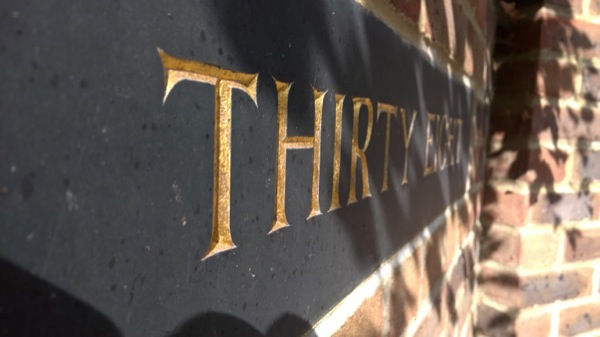Review: Nokia Lumia 930
The successor to the 'classic' Lumia 920 (see here for my comparison), the 930 had quite a lot to live up to - not least keeping Windows Phone competitive in a specifications arms war being waged by Android armies, led by the likes of the Galaxy S5 and LG G2/G3. The Lumia 930 does top the 920 quite comfortably (with one notable exception) and does bring Windows Phone up to the level of performance expected in 2014. Is it enough, though?
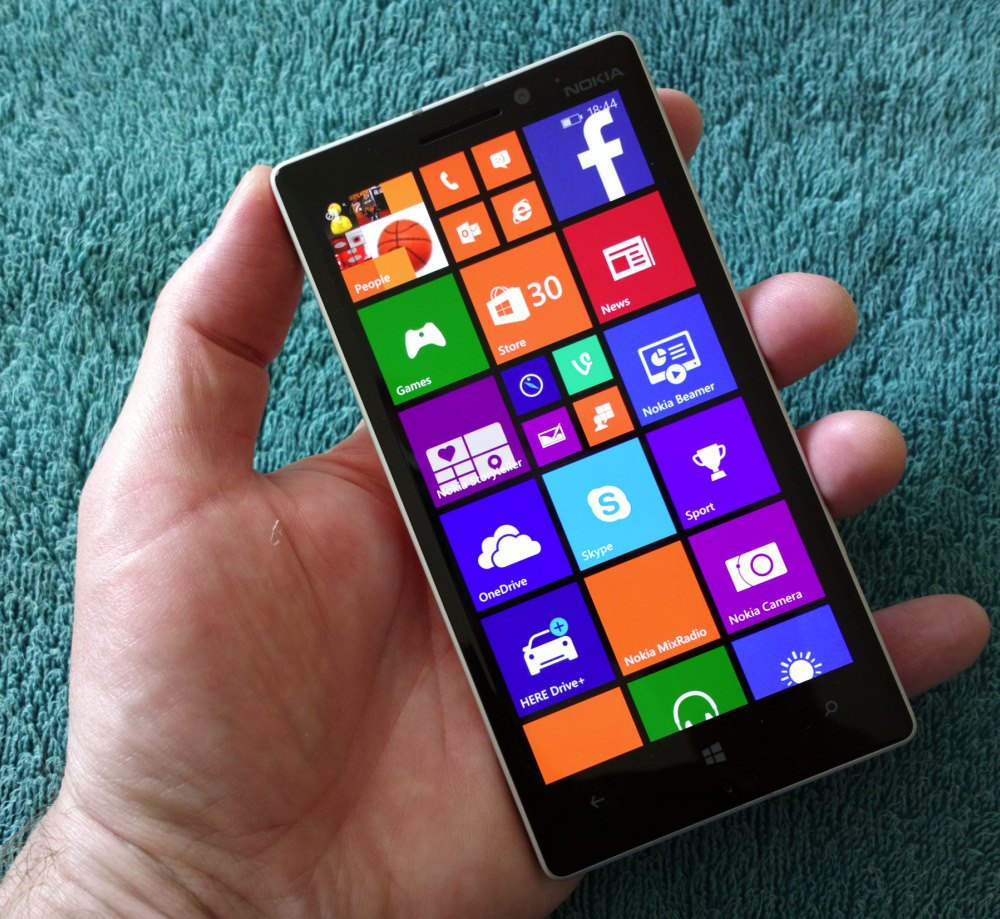
General hardware
The Lumia 930 is, it has to be said, almost the perfect form factor for a smartphone. As evidenced by it being almost identical dimensions to the likes of the best-selling Galaxy S5. With the 5" screen and a 16:9 aspect ratio screen, with minimal bezels, we have the maximum display real estate in a phone form factor that can be safely* held by people with average sized hands.
* held in one hand, the thumb and middle finger can wrap around to meet [my definition!]
In fact, the Windows Phone 8.1-running 930 is thicker than most of the Android competition, but only because the Qi wireless charging coils are built-in - Nokia/Microsoft really believes in this technology - and so do I. Add the Qi wireless charging back on a Galaxy S4 or S5 and you get a roughly similar thickness overall.
Combining perhaps the best parts of the Lumia 920 and 925 designs (the integral Qi charging, and metal frame/AMOLED-CBD screen, respectively), the 930 looks and feels like an outright winner. At first glance, this is the hardware that Windows Phone was born for. Strong praise, though see the cautions in the conclusion at the end and see also the section on Display/Glance (or rather the lack of it) below.

The aluminium frame is beautifully contoured and, despite the apparent right angles, is still comfortable to hold. The screen is 'convex' in that the edges of the glass are nicely curved down to meet the frame. While on the back a 'pillow'-shaped soft-touch plastic back also curves in to join the aluminium. Build quality is excellent, as you'd expect from Nokia. In fact, the overall feel is so premium that the eventual price of the Lumia 930 ends up as coming as a pleasant surprise.
The side control buttons are worthy of comment, being very sharply machined, with the camera shutter button in particular protruding perhaps a little more than it should. Personally, I loved the buttons and found them very easy to find, sight unseen, but my wife thought them over-sharp and that the camera one was 'uncomfortable'. In truth, there's no reason why the shutter button couldn't be lowered to the level of the power and volume controls, so maybe this will happen in future production batches.
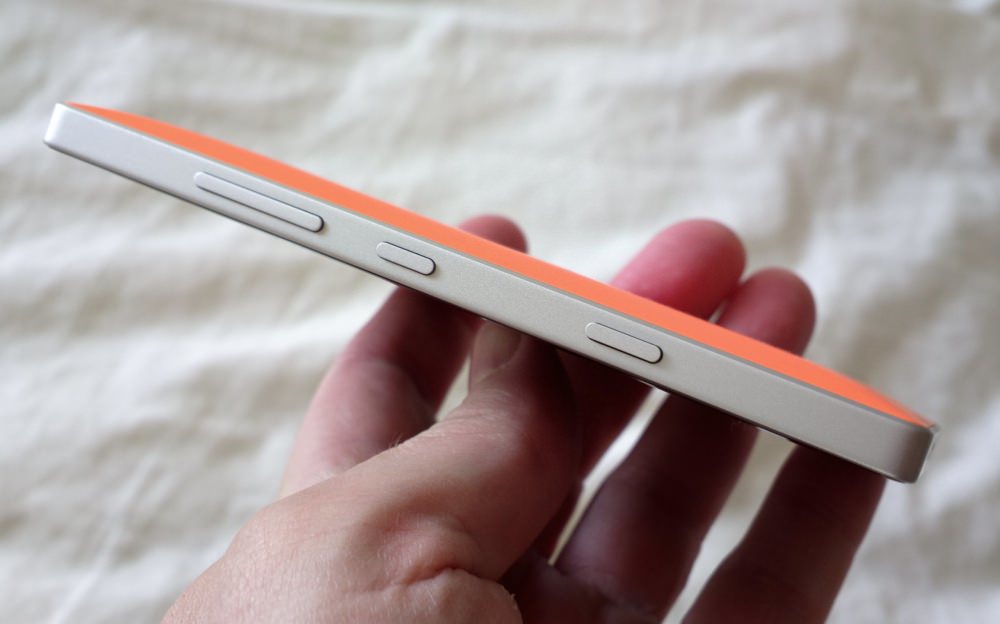
The frame itself forms part of the aerial system, it seems, iPhone 4/5-style, though even after delving deep into ultra-geek territory on the FCC filing, I'm still none the wiser as to which frequencies each case segment handles. Suffice it to say that reception and transmission should be no problem here.

Display
The display is very good, at over 440 PPI, though it's important to note that it's 'pentile', i.e. you only get full resolution on green sub-pixels. As a result, I used 'very good' just now, rather than 'stunning' - as on the true RGB (LCD) Lumia 1520 screen. However, there are the usual gorgeous AMOLED colours and it's easy to forgive the use of pentile tech (which saves power and also leads to longer display life) on a 1080p 5" screen.
Yes, Windows Phone may have been designed to look good on lower screen resolutions (square tiles, etc. on WVGA) but when viewing high quality images or videos, or browsing full web sites, it's hard not to be impressed at the clarity here. And unlike on the recent, disappointing Lumia 630, Nokia's designation here of ClearBlack Display is the real deal and not some bastardisation, thankfully. Out in the sun, the Lumia 930 is just as visible as the also excellent Lumia 920 (on the left, below):
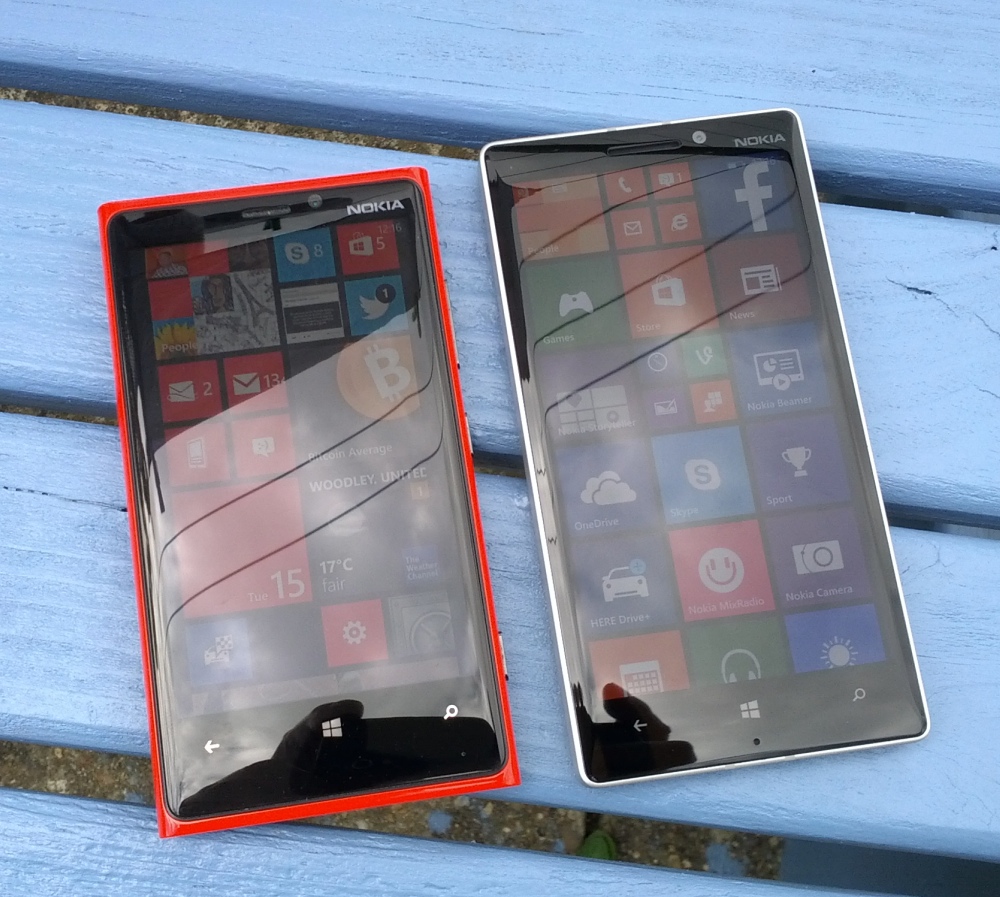
When side-scrolling content (e.g. going from the Start screen to the apps list), there's a slight shimmering which isn't pleasant - it's not clear whether this is fringe effect caused by the 1080p screen matrix or whether this is something that can be optimised better in software. It's certainly not a showstopper and you probably wouldn't even have noticed if I hadn't told you, but it's evidence that increasing the screen resolution on an OS usually brings a few challenges!
One curiosity is that Nokia Glance isn't included here. While I'd previously thought that this was a function of screen technology (i.e. AMOLED) and software, Nokia proved me wrong by adding Glance to the LCD-screened Lumia 920 and then failing to add it to this AMOLED-screened Lumia 930. The official explanation is the 930 lacks 'display memory', dedicated chips that keep certain display patterns active even when the screen's in a low power state. It's probable that Nokia simply had a problem finding suppliers for a 5" AMOLED 1080p screen with this technology at a sensible price and so opted for a cheaper 'no display memory' variant.

The omission of Glance will annoy Nokia old-timers - we've had this technology on most flagships now for four years (on Symbian, Meego and Windows Phone), but in fairness it's not the end of the world to reach over and press the power button briefly, bringing up the much richer lockscreen, complete with everything you'd get from Glance and quite a bit more besides.
Multimedia
The 1080p display is stunning when streaming 1080p video content (e.g. from YouTube or Netflix), as you'd expect - AMOLED was made for video, it seems, with blacks remaining perfectly black and colours screaming off the screen. As usual, Nokia gets the auto-brightness calibration about right for its smartphones, and I never felt the need to keep popping back into Settings to manually override.
The single speaker on the 930's back outputs through a small aperture, but it's well positioned in the grand scheme of things and, as a right hander, at least, there was no danger of blocking this when using the 930 in portrait mode. In landscape mode, when gaming and your fingers are more splayed out, it's possible to block this hole, but your fingers immediately feel the depression and the vibration, if sound is playing, so it's trivial to just move very slightly, to clear the speaker again.
Volume is similar to that on the 1520 - given the chipset similarities, it's probable that the same speaker component was used.
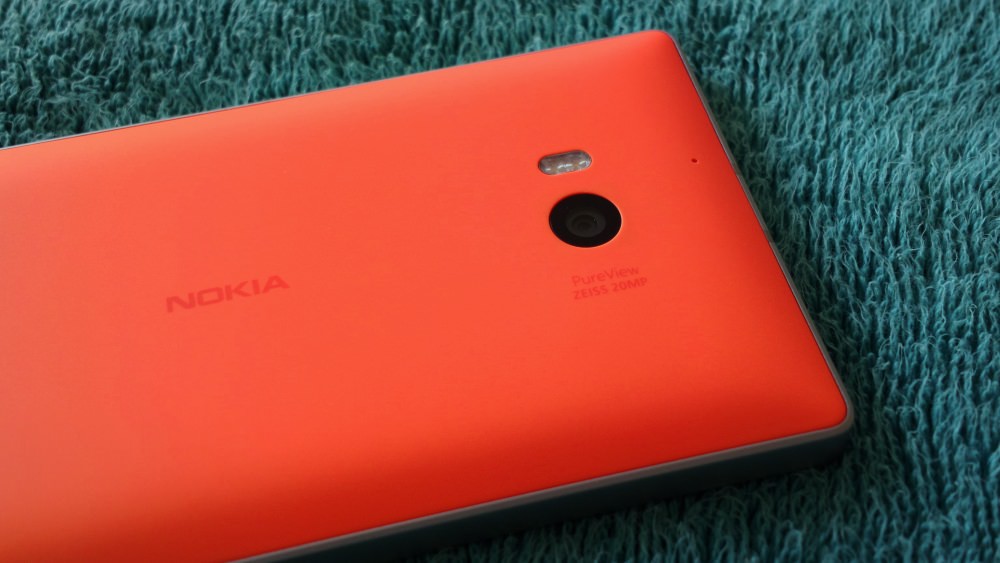
Imaging
Effectively, we're looking at exactly the same camera module as in the 1520, whose imaging I explored here. It's arguably superior to those in the likes of the Galaxy S5, Xperia Z2 and iPhone 5S, thanks to excellent image processing and the unique 'reframing' feature (though Sony tries to imitate the lossless zoom element in the Z2, of course), though only marginally so. Overall clarity in low light conditions, when wanting to zoom further, or when shooting moving subjects indoors and in low light, aren't a patch on Nokia's older Lumia 1020, of course. But then the latter is now nearing end of (sales) life and is based on an older chipset that (apparently) isn't rated highly enough for new features like 'Living Images'.
Some token sample photos, though (again) you'll already know what to expect from the 1520 - click any to download or enlarge to full 5MP size:
The 930's grasp of exposure and colour is excellent, as you'd expect from Nokia...
Superb colours and detail....
Detail and artily limited depth of field...
Seeing how close I can focus without using the PureView zoom - pretty darned close. Maximum bokeh!
The same suburban scene, as-is...
...and then using the 2x lossless zoom - pretty impressive.
Nokia (and Microsoft) have been trying to line up all their balls in a row for a while now, in terms of handling and presenting images to the user, with tweaks and updates to Photos/Camera roll, Nokia Storyteller and Nokia Camera. However, even with Lumia Cyan baked in here and even with latest updates to all of these apps (I checked), there are still big glitches.
For example, taking a photo after launching the camera from within Photos, the image you take isn't recognised in the latter until you go back to the thumbnail view and then back in. And, after taking a photo in Nokia Camera and then looking at it in Photos, the expected 'Reframe' control doesn't appear - you just get 'Open in Nokia Camera' and, when you tap that, no 'Reframe' option at all. So it's clear that some extra application updates are needed to complete Nokia's intended image flow.
Plus, it's worth noting that both 'Living Image' capture and the display of these in Nokia Camera (via the control to look back) are both turned off by default at the moment. Surely an update will turn these on? It's a unique selling point, after all!
And, half the time, when you go into Camera roll, living images don't err... move at all. With no rhyme nor reason as to why things suddenly don't work anymore. Very odd indeed.
When it's all working though (let's be generous, and give Microsoft a few more weeks to tidy up the rough edges), the effect is impressive, as you flick through Photos and see your photos, quite literally, come to life. I've covered the technology and files used here, by the way.
Storage
At first glance, the decision not to have a microSD slot in the Lumia 930 looks a little odd, set against other recent devices which can all be expanded (e.g. 630, 1520), but there are clearly space challenges in the 930, to fit everything in. I'm not saying it would be impossible, but it's clearly not easy. And remember that the Lumia 920 had 'just' the sealed 32GB disk and that this is the successor. I never ran out of space on my 920, despite doing an awful lot with it, and would presume the same applies here.
Yes, captured 1080p video will take up more space, but then with modern streaming audio and video solutions, there's comparatively less need to sideload media in the first place, so the two effects cancel each other out. I doubt any Lumia 930 user will have cause to complain about storage at any point.
Windows Phone 8.1
From the Developer Previews to our recent Lumia Cyan rollout summary story (and the links to stories within that), there's little point in regurgitating all the things Windows Phone 8.1 can and can't do. Suffice it to say that 8.1 (with Cyan) is a big step forward for the platform overall, far belying its ".1" naming (which derives from keeping in step with the desktop version of Windows). Not everyone is convinced that the gradual conformance with 2014 smartphone UIs (e.g. the drop-down notifications pane, a.k.a. 'Action Center') is a good idea, but for the majority it most certainly is. The trick for Windows Phone is to retain enough of what makes it different while conforming to specific UI concepts that users will expect when 'having a play' in a shop.
The biggest unique selling point in shops, other than Nokia hardware (for the most part), is the Start screen, to be honest. Within applications, there's varying degrees of support for the original 'Metro' panoramas, and while this often works well, it's the customisability and live tile concept which really sets Windows Phone apart from a modern Android 4.4 or iOS 7 smartphone. Almost everything else has equivalents on other platforms - even the lockscreen info system, which Android is now getting close to.
We've covered the flexibility and usefulness of the Windows Phone 8.1 Start screen before, of course, pointing out what's been improved over the appearance and behaviour of older Windows Phone 8.0 devices. Of special note is that the Lumia 930 comes with a 'triple-wide' set of tile columns out of the box. It's probably better this way round, to give new users an idea of what can be done, rather than starting them off with 'double-wide' and hoping that they discover that they can do more, eyesight-permitting.
Of course, there are other selling points for Windows Phone that are shown off well here - the HERE Drive system with offline maps is still the best all-round phone-based sat-nav in my opinion, though Google Navigation and other products on Android are starting to get close. The Office, OneNote and OneDrive integration are top-notch, though Microsoft is now developing the same applications for other platforms. There's erosion of any real differentiation between mobile platforms, however you look at it. Is Windows Phone ultimately doomed? According to CEO Satya Nadella, Microsoft is going to keep 'coming at it'.
File this under 'things for Microsoft to fix', but the rendering code in Internet Explorer for embedded images is appalling - see the 1080p comparison below between the same web page image shown on the 930 (left) and the 1520 (right) - it's not clear whether it's a wrong user agent thing or simply bad coding in MSIE, but images in web pages are rendered very blockily on this screen. It's not exactly a showstopper, but as the 1080p screen on the Lumia 1520 is handled perfectly, my guess is that it's an 'optimisation' for the pentile display on the 930, and one that's gone badly wrong. The only catch is that IE isn't one of the 8.1 'decoupled' applications, so 930 users will have to wait for a firmware update in order to see a solution.
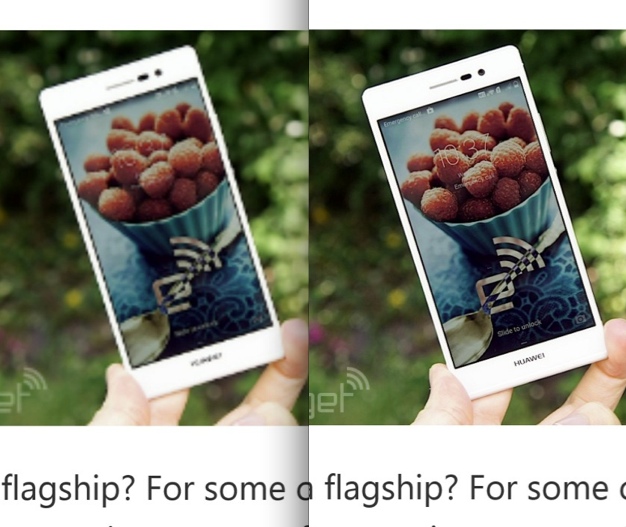
One plea that I'd have for Microsoft's UI designers - please take advantage of the very fast chipsets in devices like the Lumia 830 and eliminate or speed up some of Windows Phone's screen transitions. Three years ago they looked cool and helped disguise the lack of true multitasking and the slow processors being used, but today in 2014, tapping an app icon and having to endure 1.5 seconds of the Start screen peeling away and then the running application sliding itself into view is just unnecessary.

Against speed giants like LG's G3, Windows Phone needs to be as fast as the hardware underneath - there's no reason whatsoever why transitions shouldn't be removed completely (perhaps as a setting that advanced users can toggle) - or at the every least sped up. 1.5 seconds sounds like I'm being picky, but when you switch apps half a dozen times a minute, skipping around the UI, the transitions can easily waste five or six seconds per minute of use.
Ecosystem
It's hard to criticise the Lumia 930 and Windows Phone too much here, since everything that's provided, within Microsoft's ecosystem, holds together well. However, with Windows Phone not being the dominant mobile platform, it's a fair bet that data and services from other ecosystems may be needed at some point - and the breakdown between Google and Microsoft in terms of Windows Phone support has been much documented over the last few years. It's simply astonishing that there's no first party YouTube client for Windows Phone in 2014. And frustrating that there's no proper Google+ client at all, not even through third parties. And so on. If Microsoft were in the driving seat, would it be so readily writing Office, One Note and OneDrive clients for a hypothetical fledgling Android OS? Probably not, so you can see Google's point here. But as a user it's... frustrating.
Battery life
With a 2420mAh battery sealed inside, you'd expect reasonable longevity, and indeed you do get through a day without too much drama if you're sensible. But, as mentioned many times here on AAWP, a lot depends on how much you use applications with predominantly white themes - think Internet Explorer, OneDrive, and so on. The AMOLED screen really sucks up power in such conditions, especially at 1080p here. A lot also depends on your connectivity situation in terms of reception, and on how much you use the power-hungry camera.
Many other reviews have sniffily referred to the Lumia 930's design as far superior to "Samsung plastic designs where the back comes off", yet the latter does have the huge advantage that you can swap out the battery if you're really stuck for charge on a heavy day out. The pros and cons of sealed vs removeable batteries are explored in detail here.
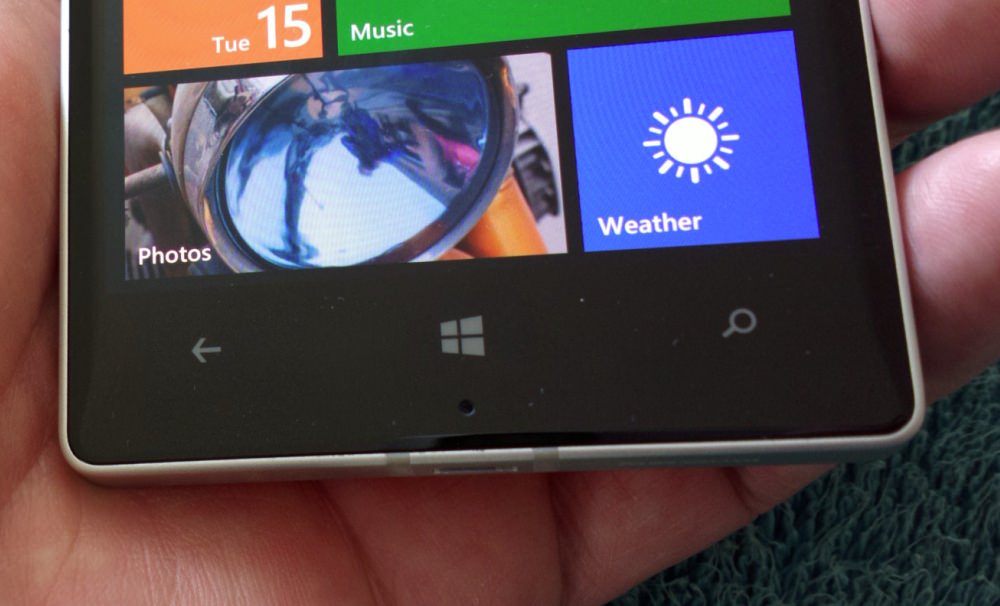
Verdict
Going back to my question right at the top of this review, is the Lumia 930 enough to keep Windows Phone afloat at the high end in the smartphone world of 2014? Possibly. At least the price is right, at just north of £400, so no silly £500+ prices here. But the Galaxy S5 is now roughly the same price, the QHD-screened LG G3 isn't that much higher, the older G2 is quite a bit cheaper, and so on. But at least the Lumia 930 isn't priced out of the market, so someone at Microsoft has done their sums right this time round.
In terms of performance and capabilities, the Lumia 930 is indeed very competitive. And, for smartphone newcomers and Windows Phone fans, provides just about the best all-round experience that the platform's ever seen (leaving aside the Glance oddity) in a true phone form factor. However, the lack of Google services and the lack of a few core third party applications remains an issue for the platform, in terms of attracting people from competing, older phones.
So, will the Lumia 930 stay afloat in the turbulent seas of 2014? Yes, just about. At least you won't miss its phosporescent orange (or green) back cover bobbing up and down!
Reviewed by Steve Litchfield at

